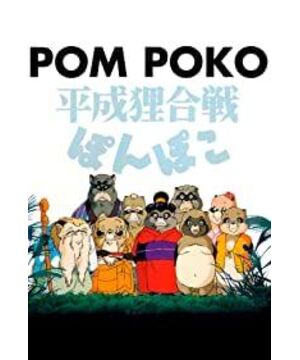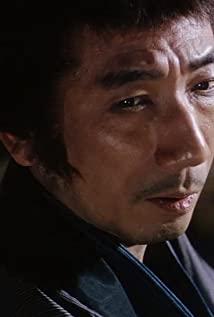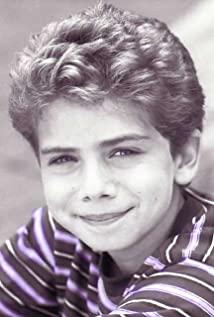"Few people have come close to him, but his process of making an animated feature film is a complete disaster, and no production company can afford to pay that dearly."
The one who made this comment was Hayao Miyazaki, the giant in the Japanese animation industry, and the person who can get the extreme praise and derogation of this episode is Hayao Miyazaki's close friend and one of the founders of Ghibli, Isao Takahata. On April 5 this year, animation master Isao Takahata passed away at the age of 82. A director with severe procrastination has produced 28 film and television dramas in his life and lost a total of 5 billion yen, which is the biggest box office poison in Japan.
But behind the fiasco at the box office, there are three awards and two nominations, especially the Lifetime Achievement Award awarded by the Annie Award Organizing Committee, one of the highest awards in the world animation industry in 2016. At the same time, looking at Takahata Isao's works, the average score of the eight films written and directed by him exceeds eight points, including "Grave of the Fireflies", "The Fairy Tale of Time", "The Variety of Tanuki" and "My Neighbor Yamada-kun". " are Ghibli's representative works, and are even considered to be Miyazaki's works. And its swan song "The Story of Kaguya Princess", although the production period lasted for eight years, and ended at the top of the Ghibli loss list, but its artistic conception and artistic expression are deeply shocking.
The main reason why Takahata Xun's films lost money is that he doesn't like to please the audience. However, Takahata's works are not all box office tragedies. For example, "The Fairy Tale of the Years" and "The Variety of Tanuki" both have good box office revenue. Coincidentally, both films have a strong environmental tone.
Different from Miyazaki's imaginative, magnificent and unrestrained, Takahata's works are more inclined to the narration of daily life, with obvious prose characteristics in narrative, more trivial life trickle, more delicate emotional depiction, and more. So much warmth and sadness. Taking "A Fairy Tale of Time" as an example, the audience, with the return of the protagonist Takako, recalls her childhood together, understands herself and her family, and even comprehends the path of life in the future. subject.
On the one hand, "Variety Tanuki" inherits the consistent artistic characteristics of Isao Takahata, and on the other hand, it also adds a rare "fantasy" element in his career, which makes it very special. In an exclusive interview with Chinese media in 2014, Hsun Takahata said: ""Various Tanuki" Japanese-based monster stories originated in China, which is a bit funny. The original Chinese stories are more scary, such as civet cats turning into humanoids to kill people What. Japanese people are not afraid of ghosts and ghosts because of animism, nor do they think it is completely illogical like today's people, but in between, Japan is such a culture. With this theme , I just want to make a civet cat story. It is to make a civet cat story that not only makes the audience happy, but is not animist but logical. What are the civet cats thinking now? They can only think about environmental issues. Due to human development, civet cats are being expelled everywhere, how can they resist? This question seems to be more modern. From the results, it seems that I have been describing environmental problems, but in fact I just follow the trend.”
The word "follow the trend" obviously points out the original intention of the production of "Varied Civet Cats". The story about the civet cats is the first element, so we have seen the various ways of life of the civet cats. Takahata's good intentions can be seen everywhere in the film. For example, he designed a variety of poses for the civet cat, including original animal poses, anthropomorphic poses, Q-version poses, and humanoid poses; another example is carefully designed several characters with outstanding personalities. The calm leader Huoqiu mother-in-law, the reckless and radical hardliner Quan Tai, Masahiro who advocates integration into human life, the highly respected monk turtle, and three elders from Shikoku, including Yashima Yuri, Matsuyama God Hidden Department, and the Sixth Emperor Jindai Myojin ; Another example is a detailed depiction of the innocent and happy daily life of the civet cats, noisy fighting, singing and dancing, and love, all full of joy. At the same time, Takahata Isao also added ballads, folklore and music with traditional Japanese cultural attributes in the film, showing infinite artistic charm.
But even more memorable are the two most imaginative passages in the film. One is the "yokai war" that the tanukis are conducting in the new town of Tama in order to prevent the development of human beings. This scene is based on "Painting Hundred Ghosts Night Walk" by Toriyama Ishiyan, a master of monster painting in the Edo period, and most of the monster images are from the original paintings of Ukiyo-e master Utagawa Hiroshige. Players who are familiar with the game "Onmyoji" should have a deep understanding of this. resonance. The army of civet cats led by the three elders of the four countries turned into various demons and ghosts, and held a grand parade on the streets of Tama New Town. The atmosphere was strange and beautiful. The climax also pays tribute to the traditional Japanese sacrificial culture.
The other is at the end of the film, when the tanukis see that the situation is over, Masaichi suggested that everyone use all their magic to restore the Tama Hills to their original appearance, even if it is only for a moment, but also to see the beautiful scene of the past. The surviving raccoons worked together and assembled on an excavator to activate an illusion. Suddenly, a large residential area was transformed into a lush green Tianchou mountain forest, an idyllic scene where people and nature coexist in harmony. The people on the high-rise buildings saw their deceased relatives in the fields, and the civet cats also saw their young self. The tears could no longer be restrained, and they cried and ran to their beautiful homes. This shocking passage is the helpless last cry of the civet cats, and it is also Takahata Xun's last farewell to the disappearing mountains and rivers. There are nostalgia, condemnation, and sighs.
It is true that Takahata Isao made an elegy for nature from the perspective of a civet cat. But compared with the sharp confrontation between man and nature shown in Hayao Miyazaki's works (such as "Princess Mononoke"), "Variety Tanuki" advocates an ecological view of peaceful coexistence. The film does not criticize the development of human beings, because population growth is an unavoidable reality, and the hard-liners in the civet cat fought with humans and ended in the fiasco of the civet cat. Furthermore, the film mentions that the civet cat itself is also facing the problem of reproduction. Too many cubs will inevitably affect the ration. In addition, after the failure of the hardliners led by Quan Tai, Zhengji advocated to actively integrate into human society to seek living space, but achieved good results. . At the same time, human beings have also realized that parks and green spaces have been set up next to residential areas for animals to live in, and the relationship between the two has gradually eased.
In my opinion, in addition to environmental issues, "Variety of Civet Cats" conveys a cultural "survival of the fittest" thinking. Rather than seeing the civet cat as an animal, it is better to see it as another relatively closed human being or an old-fashioned culture. Humans, technologies, or cultures that are at the forefront of a social process often have an overwhelming advantage over other humans and cultures that can forcibly change everything. So how does the weaker party decide? What attitude should the stronger party take towards the beauty that is about to pass? In the case of competition, the weak side has no chance of winning, and the strong side will have no chance of winning in the end. These are issues that we need to think about. Takahata Xun gave an idea, but did not dare to look forward to the future. Maybe we are those raccoons who are hesitating about where to go.
♑
View more about Pom Poko reviews











